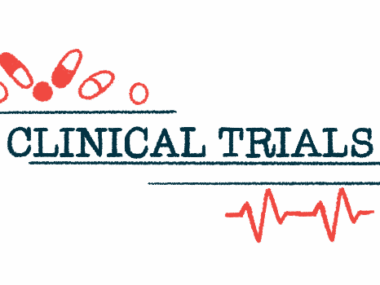Wearable cybernetic therapy shown to boost walking ability in SBMA
Improvements seen for 3 patients trained with HAL device over 2 years
Written by |

Training with a wearable robotic hybrid assistive limb (HAL) device over two years was found to markedly improve the walking abilities of three patients with spinal and bulbar muscular atrophy (SBMA) who were also receiving treatment with leuprorelin, according to a new study by researchers in Japan.
No notable changes were observed among the patients in the levels of two blood markers of muscle damage, and no significant changes were seen in three scores measuring different aspects of health — physical, mental, and social well-being. Typically in SBMA, muscle damage increases over time, and measures of health are seen to decline.
These findings suggest that HAL “improves and maintains gait [walking] ability in patients with SBMA over a long period,” Osamu Kano, MD, PhD, a professor in the Toho University Faculty of Medicine in Tokyo and the study’s lead author, said in a press release.
“Furthermore, this also suggests that continuous [cybernetic] therapy may be able to maintain [quality of life],” Kano said.
Titled “A preliminary study on the effects of long-term robot suit exercise training on gait function and quality of life in patients with spinal and bulbar muscular atrophy,” the study was published in the Journal of Clinical Neuroscience.
HAL device with leuprorelin therapy also aids life quality in SBMA
SBMA, also known as Kennedy’s disease after the first physician to describe it, is a rare adult-onset form of spinal muscular atrophy that most commonly affects males.
It is caused by mutations in the androgen receptor (AR) gene, which contains the instructions for a key protein present in motor neurons. These nerve cells, responsible for controlling voluntary movements, are gradually lost in people with the genetic condition.
Symptoms, which usually begin between the ages of 30 and 50, progress slowly and include muscle spasms in the arms and legs. As a result, patients have difficulties walking, and a higher risk of falls. Over time, the bulbar muscles, which are those of the face and throat, also weaken and make it harder to speak and swallow.
In recent years, scientists at Japan’s Tsukuba University and robotics company Cyberdyne have developed a wearable robot device, called Hybrid Assistive Limb, or HAL, that’s designed to improve a person’s ability to move. This device has been approved in Japan to treat patients with SBMA.
The technology uses interactive biofeedback, enabling it to capture physiological signals from the body through sensors and translate them into action. The process begins when the brain sends a signal to the muscles, initiating movement. This intentional signal can be detected on the skin by the HAL sensors, which then assist the patient in executing the desired movements.
Our study suggests that HAL treatment combined with leuprorelin therapy in patients with SBMA may maintain gait function and [quality of life].
Case reports have supported HAL’s efficacy in SBMA. However, the long-term impact of the wearable device has yet to be evaluated — along with its impact on health-related quality of life (HRQoL).
Now, a team of researchers followed three patients — ages 48, 60, and 69 — diagnosed with SBMA at Toho University Omori Medical Center between January 2019 and December 2020. All patients could walk for more than 10 meters with assistance and were being treated with leuprorelin, a medication that is approved in Japan for the treatment of SBMA.
Patients received one HAL training program session per day, lasting 20 to 40 minutes, twice to three times a week. The total training was conducted for at least four weeks, and continued for six courses over two years.
Walking function was assessed by the two-minute walk test (2MWT), a measure of walk endurance, and the 10-minute walking test (10MWT), used to determine speed and overall walking capacity.
After completing six training courses, the average distance covered during the two-minute walk test significantly increased from 146.1 meters (479.3 feet) to 189.8 meters (622.7 feet). No significant improvement or decline was observed in the 10MWT, as well as in blood levels of creatine kinase and creatinine, two markers of muscle damage.
HRQoL, which was assessed using the patient-reported 36-Item Short Form Health Survey (SF-36), was maintained, with no significant changes seen at physical, mental, and emotional levels.
“Our study suggests that HAL treatment combined with leuprorelin therapy in patients with SBMA may maintain gait function and [quality of life],” the researchers concluded.







